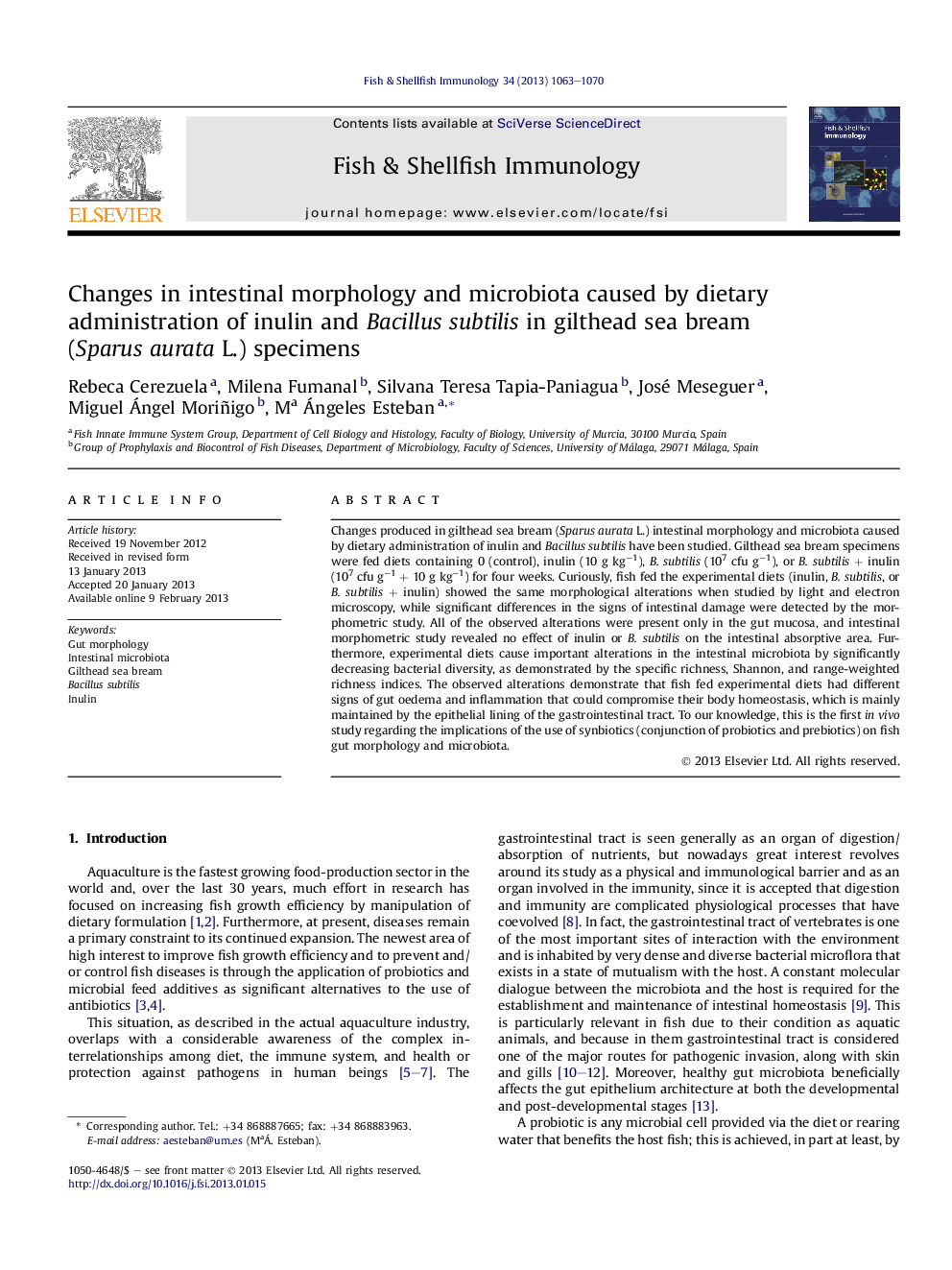| کد مقاله | کد نشریه | سال انتشار | مقاله انگلیسی | نسخه تمام متن |
|---|---|---|---|---|
| 2431848 | 1106774 | 2013 | 8 صفحه PDF | دانلود رایگان |

Changes produced in gilthead sea bream (Sparus aurata L.) intestinal morphology and microbiota caused by dietary administration of inulin and Bacillus subtilis have been studied. Gilthead sea bream specimens were fed diets containing 0 (control), inulin (10 g kg−1), B. subtilis (107 cfu g−1), or B. subtilis + inulin (107 cfu g−1 + 10 g kg−1) for four weeks. Curiously, fish fed the experimental diets (inulin, B. subtilis, or B. subtilis + inulin) showed the same morphological alterations when studied by light and electron microscopy, while significant differences in the signs of intestinal damage were detected by the morphometric study. All of the observed alterations were present only in the gut mucosa, and intestinal morphometric study revealed no effect of inulin or B. subtilis on the intestinal absorptive area. Furthermore, experimental diets cause important alterations in the intestinal microbiota by significantly decreasing bacterial diversity, as demonstrated by the specific richness, Shannon, and range-weighted richness indices. The observed alterations demonstrate that fish fed experimental diets had different signs of gut oedema and inflammation that could compromise their body homeostasis, which is mainly maintained by the epithelial lining of the gastrointestinal tract. To our knowledge, this is the first in vivo study regarding the implications of the use of synbiotics (conjunction of probiotics and prebiotics) on fish gut morphology and microbiota.
► Effect of inulin and Bacillus subtilis on intestinal morphology and microbiota.
► Same morphological alterations were observed in intestine with all diets.
► Experimental diets cause important alterations in the intestinal microbiota.
► Fish had different signs of gut oedema and inflammation.
Journal: Fish & Shellfish Immunology - Volume 34, Issue 5, May 2013, Pages 1063–1070